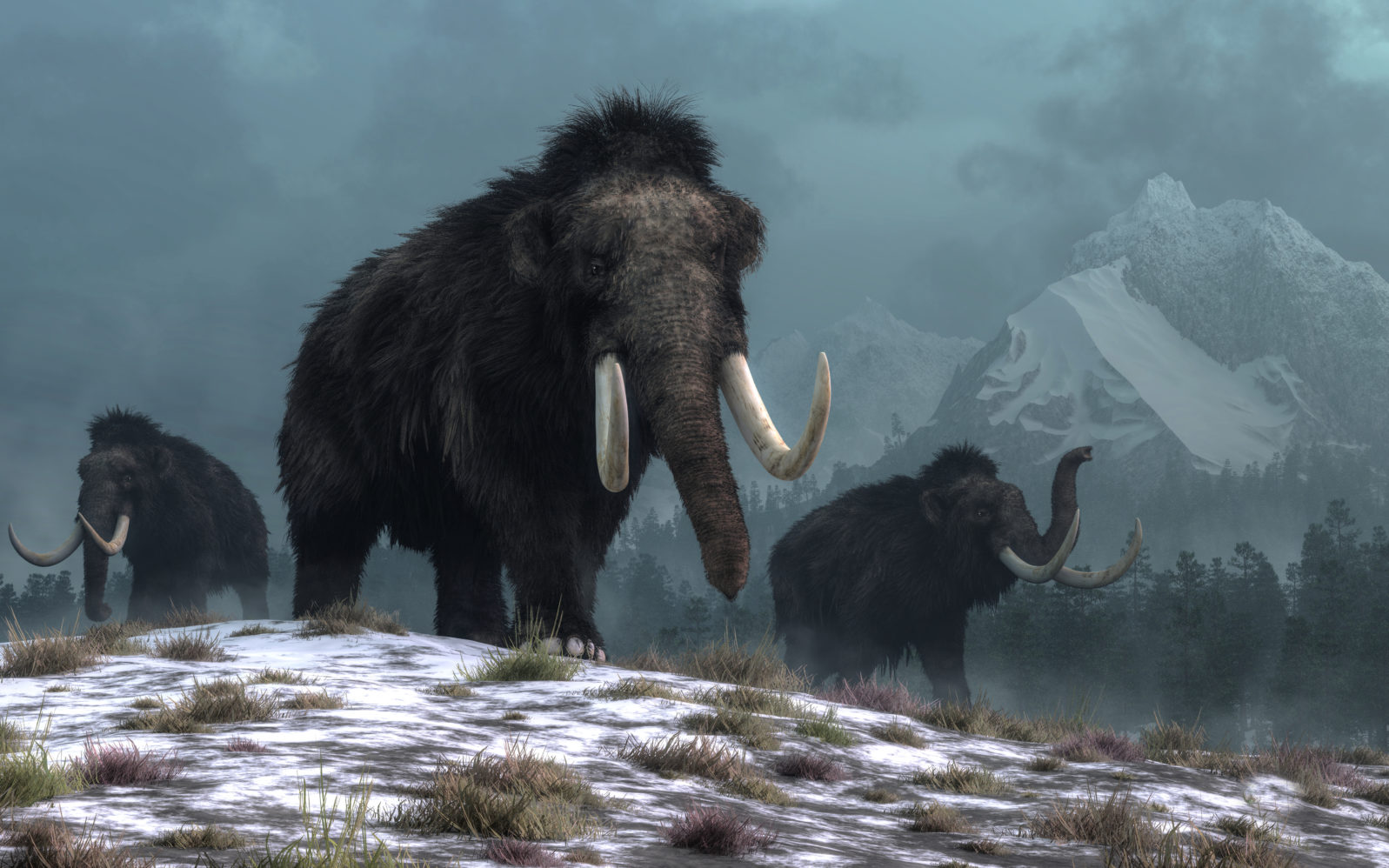Did Small Brains Doom the Mammoth and the Giant Armadillo?
A recent study showed that survivors had brains that were 53% larger, which was perhaps useful in avoiding predatorsA recent study of mammal extinctions during and after the Ice Age found that the large mammals (megafauna) that went extinct during the period of 115,000 years ago through 500 years ago (the Late Quaternary) had smaller brains in relation to body mass than those that survived:
The researchers explain that the last Ice Age was characterized by the widespread extinction of large and giant animals on all continents on earth (except Antarctica). Among these were, in America, giant ground sloths weighing 4 tons, a giant armadillo weighing a ton, and mastodons; in Australia the marsupial diprotodon weighing a ton, giant kangaroos, and a marsupial ‘lion’; and in Eurasia giant deer, woolly rhinoceros, mammoth, and giant elephants weighing up to 11 tons,. Other large animals, however, such as elephants, rhinos, and hippos, survived this extinction event and exist to this day. The researchers also note that in some places, the extinction was particularly widespread; in Australia, the red and grey kangaroos are today the largest native animals, and in South America the largest survivors are the guanaco and vicuña (similar to the llama, which is a domesticated animal), and the tapir while many of the species weighing half a ton or more have become extinct.
Tel-Aviv University, “Brain size determined the chances of survival among large animals, study finds” at ScienceDaily (May 9, 2022)
Their hypothesis is that a large brain correlates to higher intelligence and that higher intelligence meant more flexibility in behavior, so as to adapt to changing circumstances, including hunting by humans, who had begun to develop lethal weapons. Specifically, survivors had brains that were 53% larger relative to body mass than extinguished species’ brains:
Using logistic, and mixed effect models, and controlling for phylogeny and body mass, we found that large brains were associated with higher probability to survive the Late Quaternary extinctions, and that extant species have brains that are, on average, 53% larger when accounting for order as a random effect, and 83% when fitting a single regression line. Moreover, we found that models that used brain size in addition to body size predicted extinction status better than models that used only body size. We propose that possessing a large brain was an important, yet so far neglected characteristic of surviving megafauna species.
Dembitzer, J., Castiglione, S., Raia, P. et al. Small brains predisposed Late Quaternary mammals to extinction. Sci Rep 12, 3453 (2022). https://doi.org/10.1038/s41598-022-07327-9. The paper is open access.

That sounds reasonable in principle. But a couple of cautions might be in order based on other known information about the relationship between brain size and brain capacity.
According to one study, lemurs, with brains 1/200th the size of chimps’ brains, passed the same IQ test.
Sometimes a small brain is actually an advantage. This is especially true of flighted life forms such as birds and insects. Consider the gnat ogre fly, with a brain “smaller than the period at the end of this sentence”: “The researchers attribute the fly’s ability to adjust its trajectory so rapidly to its small size, which allows signals to travel rapidly from eye to brain to flight muscles.”
Small brains can succeed if they are highly organized for survival: “ … researchers say, fly brains may be organized so as to make predictions based on universal design aspects of animal nervous systems, to avoid the swat.” Thus, the fact that the fly has only 100,000 to a million neurons depending on species, and you have 86 billion neurons doesn’t improve your chances of a successful swat because the fly’s neurons are organized with only a few goals (like anti-swat), not thousands of them (as you have).
Of course, the Quaternary megafaunas’ brains may have been — not only small — but not particularly well organized for survival in the face of changing circumstances. That would be a challenge to study with the materials we currently have. But we can’t just use size as the deciding factor.
Navigator Eric Cassell, who has studied the advanced navigation systems we sometimes find in life forms with very small brains, thinks that the principles on which they operate are algorithmic, as in computers: “Consider, for example, butterflies migrating over several generations from Canada to Mexico and back. No single butterfly makes the whole trip there or back.” If the butterflies inherit an algorithm, they don’t need to “think about it,” in the human sense, which reduces the need for a large brain.
While the human brain is large,compared to that other other species, it has actually shrunk 10% in the last 40,000 years, with no negative impact on human numbers or cultural development.
And then there is the hard-to-account-for fact that some humans live normal lives with very little brain or brains split in half or half removed (for surgical reasons).
If it were just humans, we could say it was part of human uniqueness. But recently, an aged lab rat was sent to a lab for a study on aging and it turned out to have never had much brain at all — yet it lived in a lab in such a normal way that the fact was undetected until a brain scan was done.
In short, there may very well be a relationship between brain size and survival in megafauna but that relationship is not straightforward.
Note: “Marsupial lion” of Australia?
You may also wish to read: Can largely rearranged genomes explain why octopuses are smart? Even compared to each other, the genomes of three cephalopods studied had been broken up and extensively reorganized. The relationship between massive genome rearrangement and very high intelligence in an invertebrate remains unclear but it is a promising research avenue.
